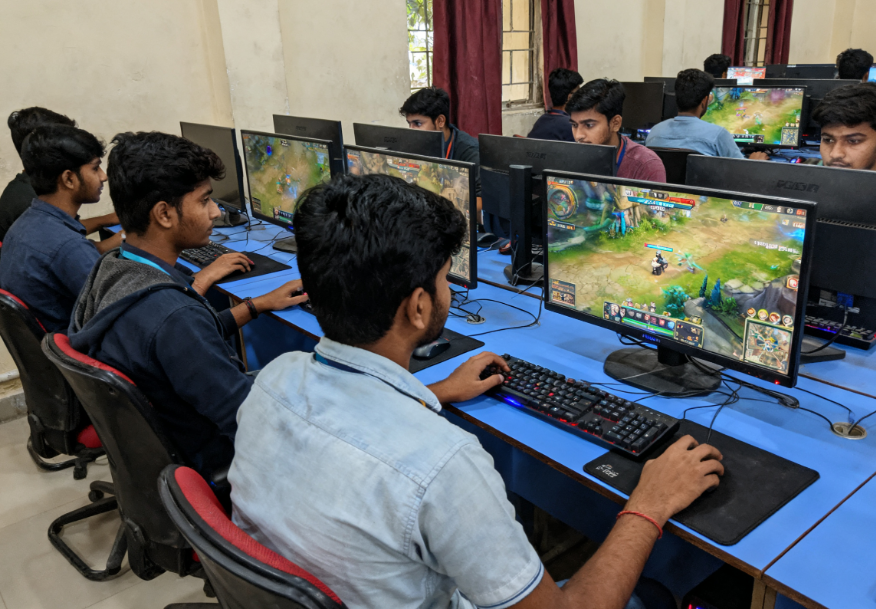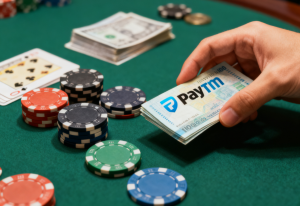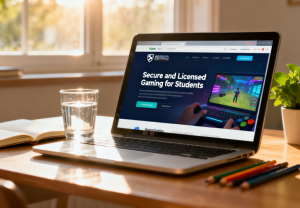In recent years, India has witnessed a surge in online gaming, with students emerging as one of the most active demographics. From mobile battle royales to educational strategy games, the landscape of online gaming for students in India is evolving rapidly—blending entertainment with learning, social connection, and skill development. This article explores the trends, benefits, challenges, and best practices for students engaging in online gaming, backed by data, expert insights, and actionable tips.
The Boom of Online Gaming Among Indian Students: Market Insights and Preferences
Market Growth and Demographic Dominance
India’s online gaming market, valued at 1.8billionin2023,isprojectedtoreach5 billion by 2025, with students (aged 12–24) accounting for nearly 60% of active players. A 2023 survey by Digital India Foundationfound that 78% of urban students and 54% of rural students play online games weekly, citing accessibility (via affordable smartphones) and social connectivity as key drivers.
Top Genres and Platforms
Students in India gravitate toward:
- Multiplayer Online Battle Arenas (MOBAs): Games like Mobile Legends: Bang Bangand Arena of Valordominate due to team-based strategy.
- Battle Royale: Free Fireand PUBG Mobileremain popular for their fast-paced action.
- Educational Games: Platforms like Prodigy Math Gameand Khan Academy Kidsblend learning with play, preferred by 42% of parents for their skill-building potential. Mobile dominates as the primary device (89%), reflecting India’s high smartphone penetration (70% of households).
Educational and Cognitive Perks: How Online Gaming Enhances Student Development
Sharpening Problem-Solving and Critical Thinking
Contrary to stereotypes, strategic games boost cognitive skills. A 2022 study by NASSCOMrevealed that students who played puzzle-based games (e.g., Monopoly GOor Clash of Clans) scored 18% higher in math problem-solving tests than non-gamers. These games require real-time analysis, resource management, and adaptability—skills transferable to academic challenges.
Building Digital Literacy and Tech Fluency
Online gaming familiarizes students with digital tools, from in-game chat features to virtual economies. For instance, managing in-game currency or collaborating via voice chat on platforms like Discordhones tech adaptability—critical in India’s digital-first economy.
Reward Systems and Player Retention: Lessons for Engagement
Games excel at motivating through rewards: daily login bonuses, level-ups, and team achievements. This aligns with player retentionstrategies, where instant gratification drives consistent engagement. Platforms like CROWN11leverage this by offering badges and virtual rewards for completing educational quests, making learning feel like play. Learn more about CROWN11’s reward system
Social Dynamics: Connection vs. Risk in Student Gaming Communities

Positive Social Impact: Teamwork and Belonging
Multiplayer games foster collaboration. A case study from Bangalore’s Vidya Mandir Schoolfound that students formed study groups via Among Us, using in-game communication to plan study schedules. Such interactions build leadership, empathy, and cross-cultural connections, especially in diverse classrooms.
Risks: Addiction, Cyber Threats, and Privacy Concerns
However, unregulated gaming poses risks:
- Addiction: 15% of surveyed students reported skipping homework to game, per Child Rights and You (CRY).
- Cyberbullying: 22% of teens encountered harassment in gaming chats, according to Internet and Mobile Association of India (IAMAI).
- Privacy Leaks: Sharing usernames or locations can expose students to identity theft.
Safe Online Gaming: Practical Steps for Students and Parents
Parental Controls and Age-Appropriate Content
Use tools like Google Family Linkor platform-specific filters (e.g., CROWN11’s age verification system) to restrict access to mature content. Explore CROWN11’s safety features to ensure a secure environment.
Time Management: Balancing Play and Study
Experts recommend the “2-Hour Rule”: limit daily gaming to 2 hours, with breaks every 30 minutes. Apps like Forestor in-built phone screen time trackers can help enforce limits.
Cyber Safety: Protecting Personal Information
Teach students to:
- Avoid sharing real names, addresses, or school details.
- Recognize phishing links (e.g., “click here to win free skins”).
- Use VPNs on public Wi-Fi to prevent data breaches.
Future Trends: What’s Next for Student Online Gaming in India?
Esports in Schools: From Hobby to Curriculum
Schools like Delhi Public Schoolare experimenting with esports clubs, using games like Valorantto teach teamwork and strategy. This shift could soon integrate gaming into career counseling for tech-driven fields.
AI-Powered Personalization
Platforms like CROWN11use AI to tailor games to a student’s skill level. For example, math games adjust difficulty based on performance, ensuring neither boredom nor frustration—enhancing both fun and learning.
Online Gaming for Students in India: Benefits vs. Risks at a Glance
| Benefits | Risks |
|---|---|
| Improved problem-solving skills | Addiction and time mismanagement |
| Enhanced digital literacy | Cyberbullying and privacy risks |
| Social connection and teamwork | Exposure to toxic behavior |
Conclusion: Harnessing the Power of Online Gaming Responsibly
Online gaming for students in India is more than just a pastime—it’s a tool for growth when guided wisely. By prioritizing safety, setting boundaries, and choosing platforms with educational value, students can unlock cognitive, social, and tech benefits. For families and educators seeking a secure, enriching gaming experience, CROWN11offers a curated platform with AI-driven personalization, robust parental controls, and a reward system that blends fun with learning. Explore how CROWN11 is redefining student gaming—visit https://www.crown11app.comtoday!











